|
Wands of Horus
Gallery of
Images
from
GoldKhu
Website
Once pointed out, the extent to which the use of the Wands of
Horus are depicted in Egyptian statues is amazing. There are two
positions depicted extensively, the Master Position and the
Communication Position.
Master
Position
The most common position depicted is the Master Position. The
person is standing, the left foot is slightly forward, they are
looking straight ahead, one Wand is clenched tightly in each hand
and the arms held straight by their side.
The reason that this position is depicted is that it indicated that
the person had truly mastered, with the use of the Wands, the
ability to move and communicate freely between the material and
spiritual planes.
|
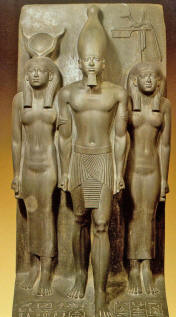 |
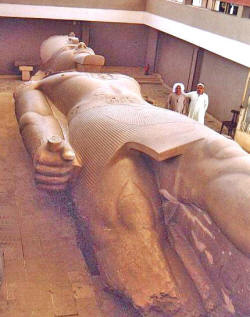 |
|
The Triad
of Mycerinus, currently located in the Cairo Museum.
Note the stance adopted by the Pharaoh and the cylinders
in his hands. Menkaura' s reign is dated Dynasty 4, CA.
2490-2472 BC. |
The
Colossus of Ramesses is an enormous statue carved in
limestone. It is about 10m (33.8 ft) long, even though
it has no feet, and is located near the village of Mit
Rahina. A small museum has been built to house this
magnificent piece. Note the cylinder clasp in his hand.
Ramesses reign is dated 19th Dynasty 1279-1213 B.C.
|
|
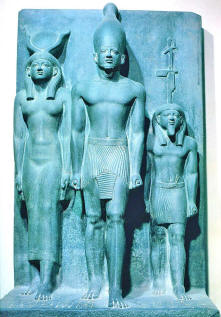 |
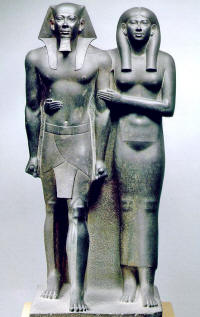 |
|
Pharaoh
Mycerinus with goddess Hathor and personification of
Thebes. Dynasty 4, CA. 2490-2472 BC. |
King
Mycerinus & Queen Kha-merer-nebty II The statue of the
pharaoh Mycerinus and his queen was uncovered in 1910
when his pyramid and its temples at Giza were excavated
by an archaeological expedition. Greywacke, Egypt,
Dynasty 4, CA. 2490-2472 BC.
|
|
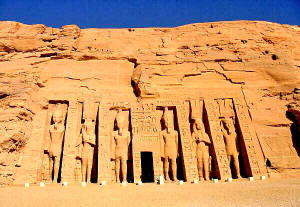 |
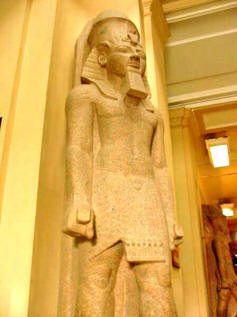 |
|
|
A statue
of Ramesses II in the Cairo Museum. Note the stance and
cylinders in his hands.
|
|
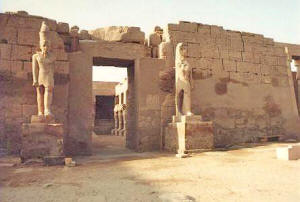 |
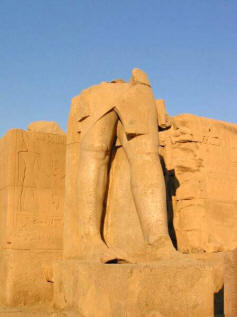 |
|
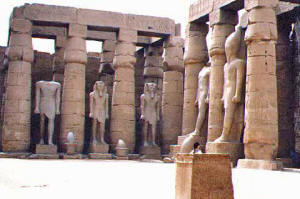 |
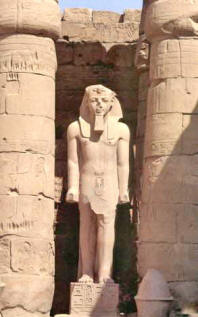 |
|
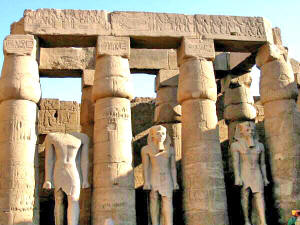 |
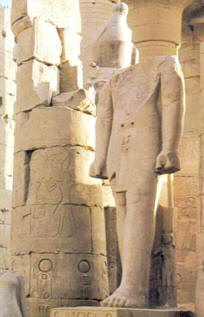 |
|
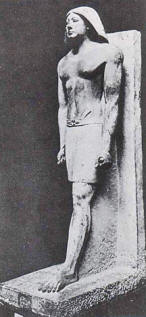 |
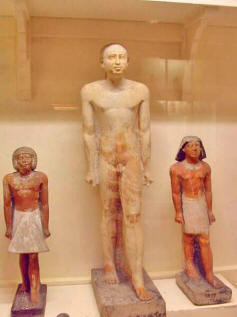 |
|
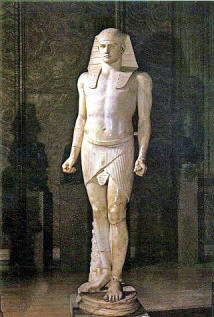 |
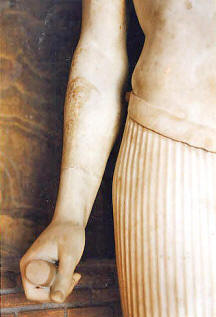 |
|
The Statue
of Antinous in the Vatican Museo Egiziano. Found in 1739
in the Canope of the Villa Adriana.
|
|
|
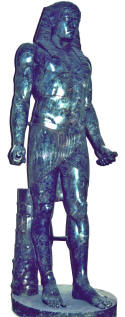 |
 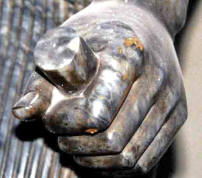 |
|
Sculpture
of an Egyptian priest holding nine-faceted "Wands of
Horus". Photograph taken in the Hermitage, St Petersburg
. |
|
Communication Position
Less commonly depicted, but just as significant is the
Communication Position.
This is the position adopted to communicate with your higher spirit
guide. In the case of the Pharaohs and priests, those guides would
have been one of those from the highest planes such as Ra,
Osiris and Horus or other initiate adepts. Hence the
position not only depicted one who had mastered this form of
communication, but also ruled with the authority and guidance of
those from the highest planes, providing a direct source of
communication with the divine.
It should be remembered that the Wands are ultimately a
training tool, hence those who had mastered this form of
communication were often depicted in the sitting position with both
hands flat on their foreleg, as in the case of the statues of
Ramses at the entrance of the temple at Abu Simbel.
This position is also the original of the symbol of the throne, the
King of the middle ages sitting on his throne is symbolic of one
divinely appointed and guided to serve his people.
|
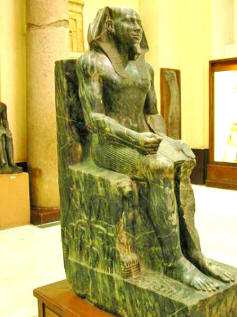 |
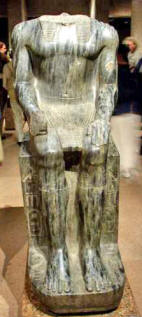 |
|
The
diorite life sized statue of Khephren seated on his lion
throne with the falcon of Horus hovering above his head.
This statue indicates that Horus was his higher spirit
guide. |
|
|
 |
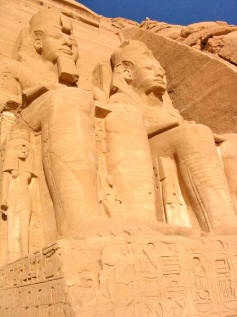 |
|
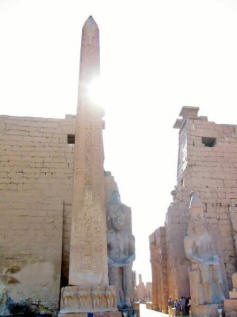 |
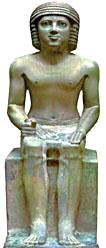 |
|